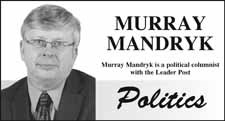Dr. Lewis Draper - the former mayor and one-time NDP MLA for Assiniboia-Gravelbourg - has a new book out entitled Prairie Doctor.
Like Dr. Draper himself, the book is an interesting piece of work - one both pleasant and colourful. But unlike his previous work where the former NDP MLA laments his years in politics and his deep-seeded opposition to rural hospital closures and what he calls former NDP premier Roy Romanow's "health deform", Draper's latest writing is mostly autobiography.
It chronicles the English doctor's arrival from Scotland (via Nigeria) to Wadena and then Lafleche where he details the adventures of a young foreign doctor adjusting to life in rural Saskatchewan in the years shortly after the controversial introduction of medicare.
But what's more interesting than the medical politics of the day is how little has actually changed in the last five decades when it comes to recruiting rural doctors.
Draper's arrival slightly before the era of South African doctors in rural Saskatchewan is really a story about the influence of foreign doctors in small-town Saskatchewan.
And many of the issues of recruitment, stability and turnover in rural Saskatchewan health care delivery are not much different than they are today. In fact, even the closure of rural hospitals that Draper and so many rural residents came to dread hasn't much changed the struggles. If anything, it's made them even more difficult.
That said, the numbers indicate that - while progress is slow - some progress is being made.
According to a recent government news release, 2013 saw an additional 61 doctors set up practice in smaller towns and cities - many of them, coming to this province as a result of the Saskatchewan International Physician Assessment program. Since the inception of (SIPPA) in 2011, a total of 113 more doctors have started working in this province.
"We continue to recruit doctors from Saskatchewan's College of Medicine, but we also rely on physicians from outside the country," said Randy Weekes, Minister Responsible for Rural and Remote Health Randy Weekes in the news release. "Recruiting IMGs is an important part of our plan to stabilize the physician workforce and strengthen rural service delivery.
"I commend those physicians who have passed the assessment and are now providing care to Saskatchewan."
But what might be more be more interesting is how evenly throughout rural Saskatchewan these doctors have been distributed: Swift Current (1), Shaunavon (2), Moose Jaw (5), Assinboia (2) Rosetown (1), Kindersley (2), Outlook (1), Kelvington (2), Nipawin (2), Tisdale, (2), Hudson Bay (1), Lloydminster (4), Meadow Lake (2),Turtleford (1)Shellbrook (3)Fort Qu'Appelle (4), Moosomin (2), Indian Head (2), Broadview (1),Watrous (1), Wadena (1), Wynyard (1), Lanigan (1), Wakaw (1) Kipling (1), Weyburn (6), Redvers (1), Arcola (1), Oxbow (1) and Estevan (1).
Such numbers suggest that there are still many doctors eager to practice medicine in small communities.
According to the 2012-13 annual statistical report for medical services branch of the Health Ministry, there were 812 general practitioners in the province - an increase from the 792 general doctors in 2011-12.
Interestingly, of those doctors, 413 practiced in Regina or Saskatoon in solo or associated practices, another 220 practiced in "urban" centres, but another 177 were in a rural association practice and 40 more were in a solo rural practice.
Yes, there are more doctors in the big and smaller city practices. And yes, there's a good argument that rural Saskatchewan could use more than 217 general practitioners.
But it does appear that rural Saskatchewan is holding its own to some extent. That must please old prairie doctors like Lewis Draper.
Murray Mandryk has been covering provincial politics for over 22 years.




